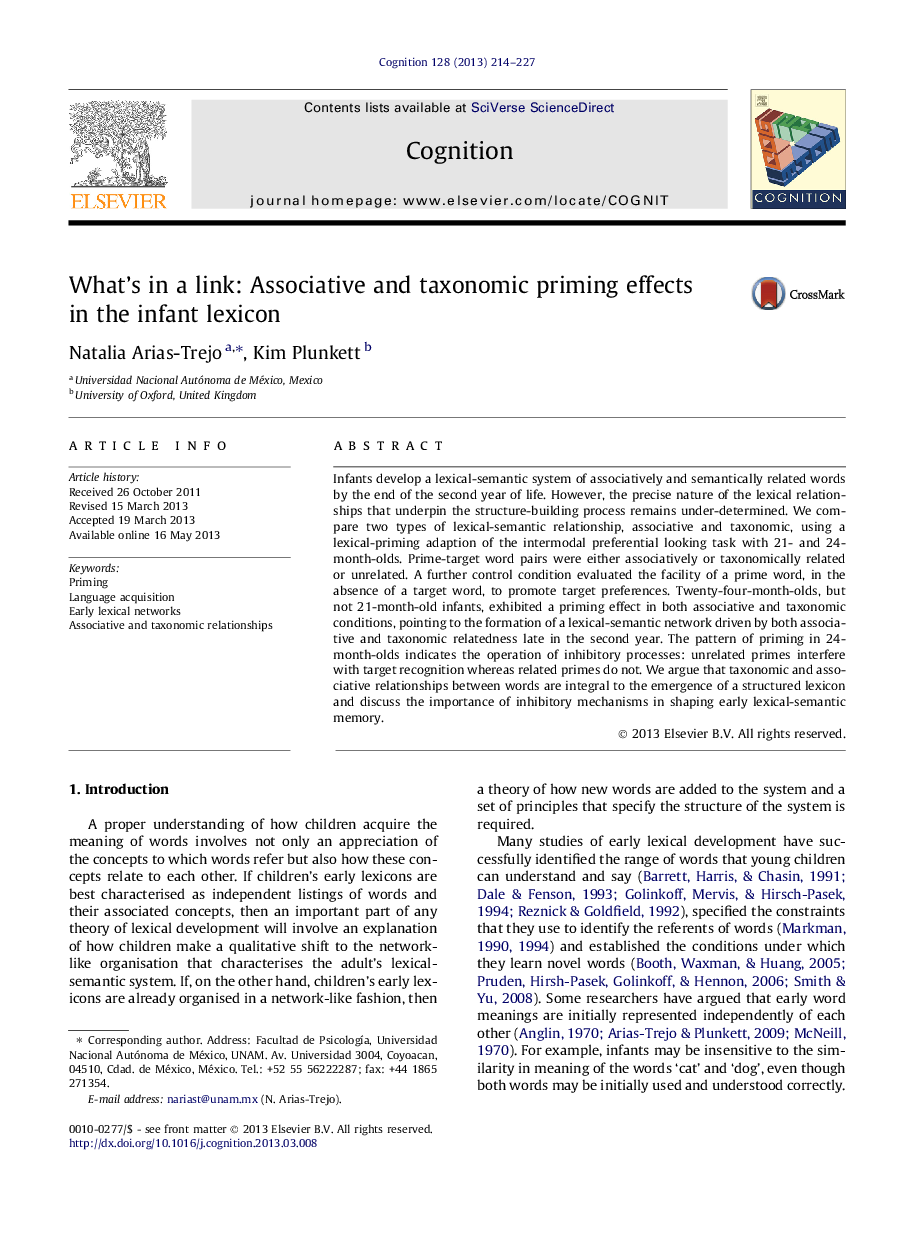| کد مقاله | کد نشریه | سال انتشار | مقاله انگلیسی | نسخه تمام متن |
|---|---|---|---|---|
| 926713 | 921896 | 2013 | 14 صفحه PDF | دانلود رایگان |
عنوان انگلیسی مقاله ISI
What's in a link: Associative and taxonomic priming effects in the infant lexicon
دانلود مقاله + سفارش ترجمه
دانلود مقاله ISI انگلیسی
رایگان برای ایرانیان
موضوعات مرتبط
علوم زیستی و بیوفناوری
علم عصب شناسی
علوم اعصاب شناختی
پیش نمایش صفحه اول مقاله

چکیده انگلیسی
Infants develop a lexical-semantic system of associatively and semantically related words by the end of the second year of life. However, the precise nature of the lexical relationships that underpin the structure-building process remains under-determined. We compare two types of lexical-semantic relationship, associative and taxonomic, using a lexical-priming adaption of the intermodal preferential looking task with 21- and 24-month-olds. Prime-target word pairs were either associatively or taxonomically related or unrelated. A further control condition evaluated the facility of a prime word, in the absence of a target word, to promote target preferences. Twenty-four-month-olds, but not 21-month-old infants, exhibited a priming effect in both associative and taxonomic conditions, pointing to the formation of a lexical-semantic network driven by both associative and taxonomic relatedness late in the second year. The pattern of priming in 24-month-olds indicates the operation of inhibitory processes: unrelated primes interfere with target recognition whereas related primes do not. We argue that taxonomic and associative relationships between words are integral to the emergence of a structured lexicon and discuss the importance of inhibitory mechanisms in shaping early lexical-semantic memory.
ناشر
Database: Elsevier - ScienceDirect (ساینس دایرکت)
Journal: Cognition - Volume 128, Issue 2, August 2013, Pages 214-227
Journal: Cognition - Volume 128, Issue 2, August 2013, Pages 214-227
نویسندگان
Natalia Arias-Trejo, Kim Plunkett,